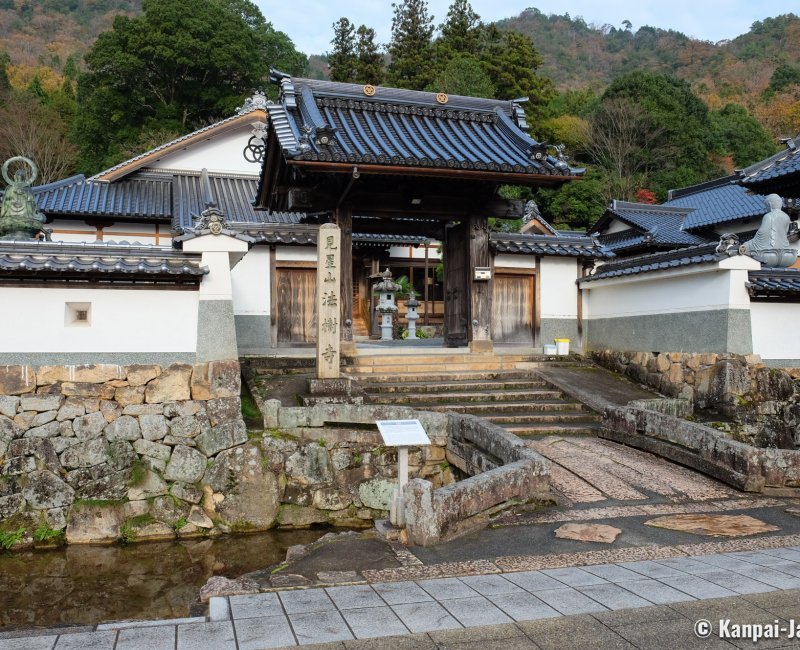Takeda Castle Ruins
Feudal Vestiges Amidst the Clouds
Takeda Castle Ruins refers to the remains of stone walls located at the top of Mount Kojo in Asago City, in the north of Hyogo Prefecture. Renowned for the greatness and the beauty of its historical ruins, the site is listed among the 100 most remarkable castles of the archipelago. On some autumn mornings, the castle seems to be floating in the sky, surrounded by a sea of clouds.
When talking about "Japanese Castles 🏯", one usually think of the splendid constructions displaying moats and keeps with a commanding view on their surroundings, such as the castles of Himeji, Osaka or Matsumoto. However, in the past years and while lesser known from foreign tourists, many other medieval sites have been enjoying a renewed interest among the Japanese people. It is the case for Takeda Castle (Takeda-jo) or rather for its vestiges: beautiful ruins from which one still can guess the location of several successive enclosures, which were the site’s defensive system at the times.

Admiring the "Castle in the sky" in autumn
Perched at about 353 meters of altitude, Takeda-jo is one of the few castles in Japan to be of the yamajiro type, that is to say built at the top of a hill or a mountain. In autumn 🍁, especially from mid-September to early November, and depending on the weather conditions, water from the Maruyama River crossing the valley evaporates and creates a thick fog. At the first ray of dawn, the ruins of Takeda Castle seem to be floating in the sky, surrounded by a sea of clouds called Unkai.
This extraordinary view, happening only a few days per year, is at the origins of the place’s official nicknames: "Japan’s Machu Picchu" or "Castle in the sky", which immediately reminds of the imaginary floating island Laputa in Hayao Miyazaki’s animated movie Castle in the Sky.

Discovering the troubled history of the Japanese Middle Ages
Takeda-jo was built around 1443 by Otagaki Mitsukage, a retainer of Yamana Sozen, the daimyo lord ruling over the region and already owner of the neighboring Izushi Castle, in Toyooka. Otagaki became the first lord to live in this place.
In the 16th century, during the Tajima Province Campaign, Takeda Castle was seized by Toyotomi Hideyoshi who placed his youngest brother Hidenaga to rule over it. Akamatsu Hirohide was the last in a succession of lords to reign over Takeda. During his time, earthen fortifications were reinforced and stone walls added to all the enclosures.
The fate of the castle was sealed by the Battle of Sekigahara in 1600. At the times, Akamatsu Hirohide who initially fought for the Toyotomi clan before joining Tokugawa Ieyasu after his victory, was accused of arson and forced to commit seppuku (traditional suicide by cutting one’s stomach open).
Takeda-jo was then left in derelict until the 20th century, when it was acknowledged as Japan’s historical heritage. Restoration and preservation works on the ruins lasted several decades and ended in 1980.

Walking in the preserved fortifications
Visiting the ruins of Takeda Castle is recommend all year round. The view on the sea of clouds is certainly worth the logistics of checking the weather beforehand and wake up very early to hike to the summit before sunrise. Otherwise, the end of the 16th century stone walls ruins per se also are an interesting excursion.
The large defensive walls, measuring 400 meters north to south and 100 meters east to west, offer a pleasant hike of about one hour long. Several locations give a view on the surrounding landscape, made of middle range mountains covered by forests and small countryside towns. The last pine tree standing at the top of the mountain is noteworthy, the others have died over time.
Note that the walking course is a one-way path and we cannot but encourage visitors to take their time and wait for the touring groups to leave for a better enjoyment of the ruins.

Back at the foot of the mountain, a traditional district spreading around Takeda Station encompasses small beautiful temples, Hyomai shrine and a few typical restaurants and souvenir shops. Lastly, for a comprehensive panorama on the ruins surrounded by the clouds, Ritsuun-Kyo (立雲峡), a valley located on the other side of the river and also renowned for its blooming cherry trees 🌸 in springs, offers three interesting viewing spot for amateurs photographers.

